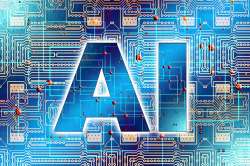AI algorithm solves Rubik's Cube in less than a second
An AI Algorithm developed by researchers can solve a Rubik's cub in a fraction of less than a second. In order to make AI systems think, make decisions

Researchers have developed an AI algorithm that can solve a Rubiks Cube in a fraction of a second, faster than most humans. The work is a step toward making AI systems that can think, reason, plan and make decisions.
Also, read:Google's 'Internet Saathis' now cover 2.6 lakh Indian villages
The study, published in the journal Nature Machine Intelligence, shows DeepCubeA -- a deep reinforcement learning algorithm programmed by University of California computer scientists and mathematicians -- can solve the Rubik's Cube in a fraction of a second, without any specific domain knowledge or in-game coaching from humans.
This is no simple task considering that the cube has completion paths numbering in the billions but only one goal state - each of six sides displaying a solid colour - which apparently can not be found through random moves.
"Artificial Intelligence can defeat the world's best human chess and Go players, but some of the more difficult puzzles, such as the Rubik's Cube, had not been solved by computers, so we thought they were open for AI approaches," said study author Pierre Baldi, Professor at the University of California.
"The solution to the Rubik's Cube involves more symbolic, mathematical and abstract thinking, so a deep learning machine that can crack such a puzzle is getting closer to becoming a system that can think, reason, plan and make decisions," Baldi said.
For the study, the researchers demonstrated that DeepCubeA solved 100 percent of all test configurations, finding the shortest path to the goal state about 60 per cent of the time.
The algorithm also works on other combinatorial games such as the sliding tile puzzle, Lights Out and Sokoban.
The researchers were interested in understanding how and why the Artificial Intelligence (AI) made its moves and how long it took to perfect its method.
"It learned on its own, our AI takes about 20 moves, most of the time solving it in the minimum number of steps," Baldi said.
"Right there, you can see the strategy is different, so my best guess is that the AI's form of reasoning is completely different from a human's," he added.
According to the researchers, the ultimate goal of projects such as this one is to build the next generation of AI systems.
Also, read:Amazon Alexa may come to Windows 10's lock screen